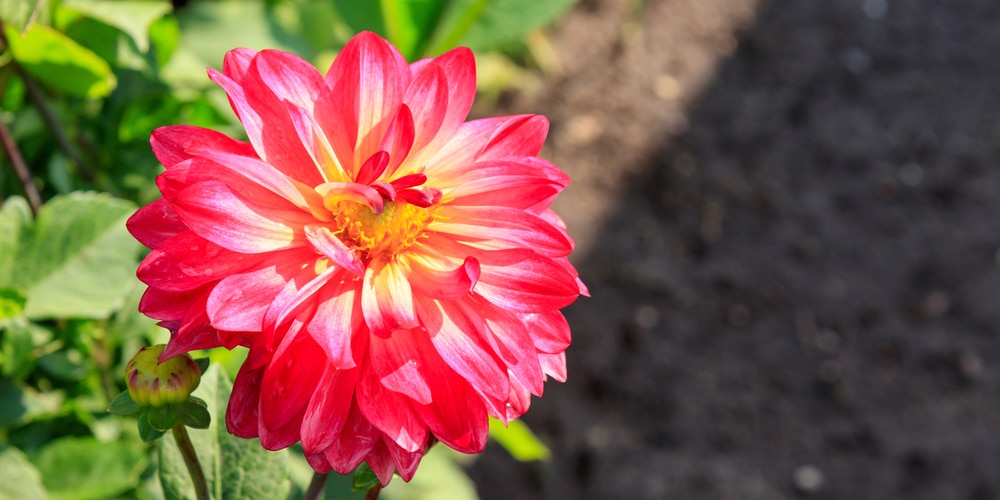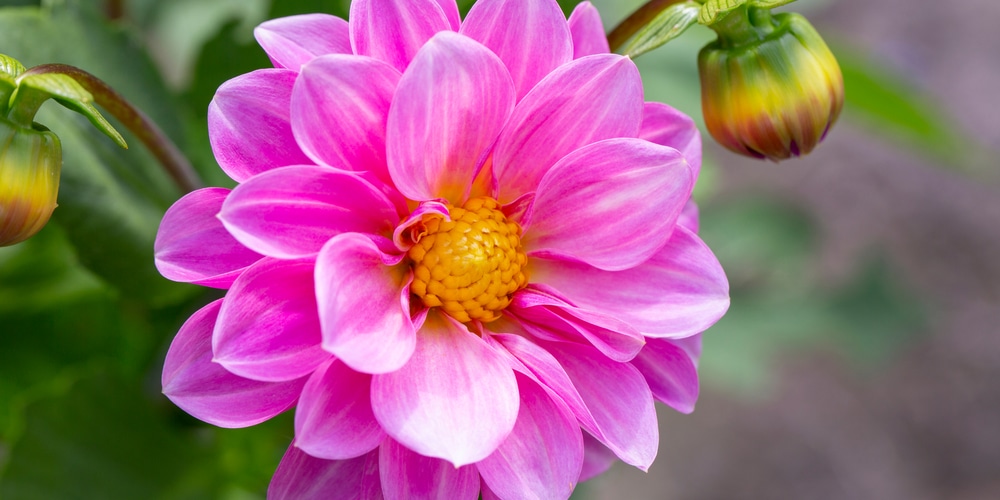Dahlia Unwin Care: Everything You Need to Know
Written by: mrsaustria
Dahlias are one of the best-loved flowers for their showy blooms and wide range of colors and shapes. But did you know that they’re also pretty easy to take care of? With just a little bit of TLC, your dahlias will thrive all season long.
Dahlia Unwin Quick Facts

| Botanical Name | Dahlia Unwin |
| Common Name | Dahlia |
| Plant Type | Annual and Biennial |
| Flower Color | bright pink, yellow and white blooms and lush green foliage |
| Size When Mature | 24 inches |
| Bloom Time | Fall and Spring |
| Sun Requirements | Full Sun |
| USDA Hardiness Zones | 8-11 |
| Soil PH Range | 4.0-7.5 |
| Soil Type | Moist, well-draining |
| Water Needs | Medium |
| Native Area | Mexico |
What you Need to Know About Dahlia Unwin
Dahlia Unwin is an exquisite flowering plant that will add a touch of beauty to any garden. With its bright pink blooms and lush green foliage, this plant is sure to catch the eye of any onlooker. This vigorous dwarf variety of dahlia reaches a height of only 24 inches which makes it perfect for small gardens or pots.
It has been believed that Aztecs have used Dahlia Unwin for medicinal purposes during the early years. The tubers were boiled, and the water was used to treat different ailments such as diarrhea, vomiting, and sore throats.
When planting, be sure to give the tubers plenty of room to grow – they should be planted about 8 inches deep and 12 inches apart.
This bulbous plant is originally from Mexico, and its flowers can range in color from pale pink, fuchsia, yellow to white. The Unwin dahlia has double blooms that measure about 4 inches in diameter, and its petals are slightly ruffled. The leaves of this plant are dark green and glossy with a serrated edge.
This plant blooms during the spring and fall seasons and will continue to flower until the first frost. The flowers are very fragrant and are popular among gardeners because of their ability to attract butterflies and hummingbirds.
How to Care for Dahlia Unwin
Caring for this plant is relatively easy. Here’s what you need to know to keep your Unwin dahlia healthy and happy:
Light
Dahlia Unwin needs full sun and does well in areas that get a lot of sunlight. This plant needs at least 6 hours of full sun to bloom and grow properly.
If you live in an area with limited sunlight, you can grow this plant in a pot so it can be moved to a sunnier spot when needed. Partial shade is also tolerated, but Unwin dahlias will produce fewer blooms. 6 hours of uninterrupted sunlight is always ideal to ensure optimal growth.
Water and Soil Needs
This plant thrives in soil pH levels between 4.0 and 7.5. Water regularly, as this plant does well in normal to moist water conditions. Moreover, make sure the soil is well-drained to avoid root rot. Some studies have shown that mulching around the plant helps retain moisture and prevents weeds from growing, which means that your dahlias will require less attention in the long run.
Just remember, moist and well-drained soil – not soggy!
Temperature Requirements
Dahlia Unwin can survive in USDA climate zones 8-11, where the average annual temperature is between 60 and 80 degrees Fahrenheit. The plant can be grown in a pot and brought inside during the winter months in cooler climates.
Fertilizer
To promote growth and encourage more blooms, fertilize your Dahlia Unwin every two weeks with a water-soluble fertilizer. This plant is also known to be a heavy feeder, so make sure you give it the nutrients it needs. Its NPK ratio should be 10-10-10.
Organic fertilizers such as fish emulsion or compost tea can also be used. Make sure to read the label to see if the fertilizer is safe for dahlias. While most of these fertilizers are generally okay to use with dahlias, manufacturers have varying instructions on how to dilute and apply them.
Common Diseases
Dahlia Unwin is susceptible to a number of diseases and pests, including botrytis blight, aphids, spider mites, and thrips. To help prevent these problems, make sure to water your plants regularly and keep the soil free of debris.
You can remove pests by hand or with an insecticide, and diseases can be treated with a fungicide.
You can also use organic or synthetic pesticides to get rid of any pests that may be bothering your plants.
Dahlia Unwin Propagation
Dahlias are typically propagated by dividing the tubers. This can be done in spring, after the last frost. To divide the tubers, dig up the plant and carefully remove the tubers from the soil. Each tuber should have several eyes (new growth buds). Plant the tubers about 8 inches deep and 12 inches apart, and water well.
New dahlia plants will sprout from the eyes and can be transplanted to their permanent home after a few weeks. You can also start new plants by rooting cuttings from existing plants.
Simply take a cutting from the stem of a healthy plant, strip off the leaves, and place it in a glass of water. Change the water every day and wait for new roots to form. Once the roots are well-developed, transplant the cutting into the soil.
Whenever propagating Dahlia Unwins, remember to check the soil’s pH levels prior. This applies to all kinds of plant propagation, as the success rate depends on it.
How to Prune Dahlia Unwin
Dahlia Unwin can be pruned either in late winter or early spring. During the winter season, its flowers will be the most beautiful. However, it’s important not to prune the plant too much, or you’ll reduce its blooming potential for the following year.
Pruning should be done selectively, removing only dead or damaged branches. Make sure to use sharp pruning shears, so you don’t damage the branch further. Prune just above a node, or where the stem meets a lateral branch.
After pruning, apply a thick layer of mulch around the base of the plant to help protect it from frost damage. Remove diseased stems by cutting them off at the ground level. Dispose of them immediately to prevent the spread of disease.
Dahlia Unwin Care: Final Thoughts
Dahlia Unwin is a beautiful and hardy flowering plant that can be grown in a variety of climates. With a little bit of care, it will provide you with weeks of colorful blooms.
Make sure to water your plants regularly, fertilize them every two weeks, and remove any pests or diseases that may occur. Prune selectively in late winter or early spring, and mulch the plant well to protect it from frost damage.
You may also like: Zinnia Companion Plants

